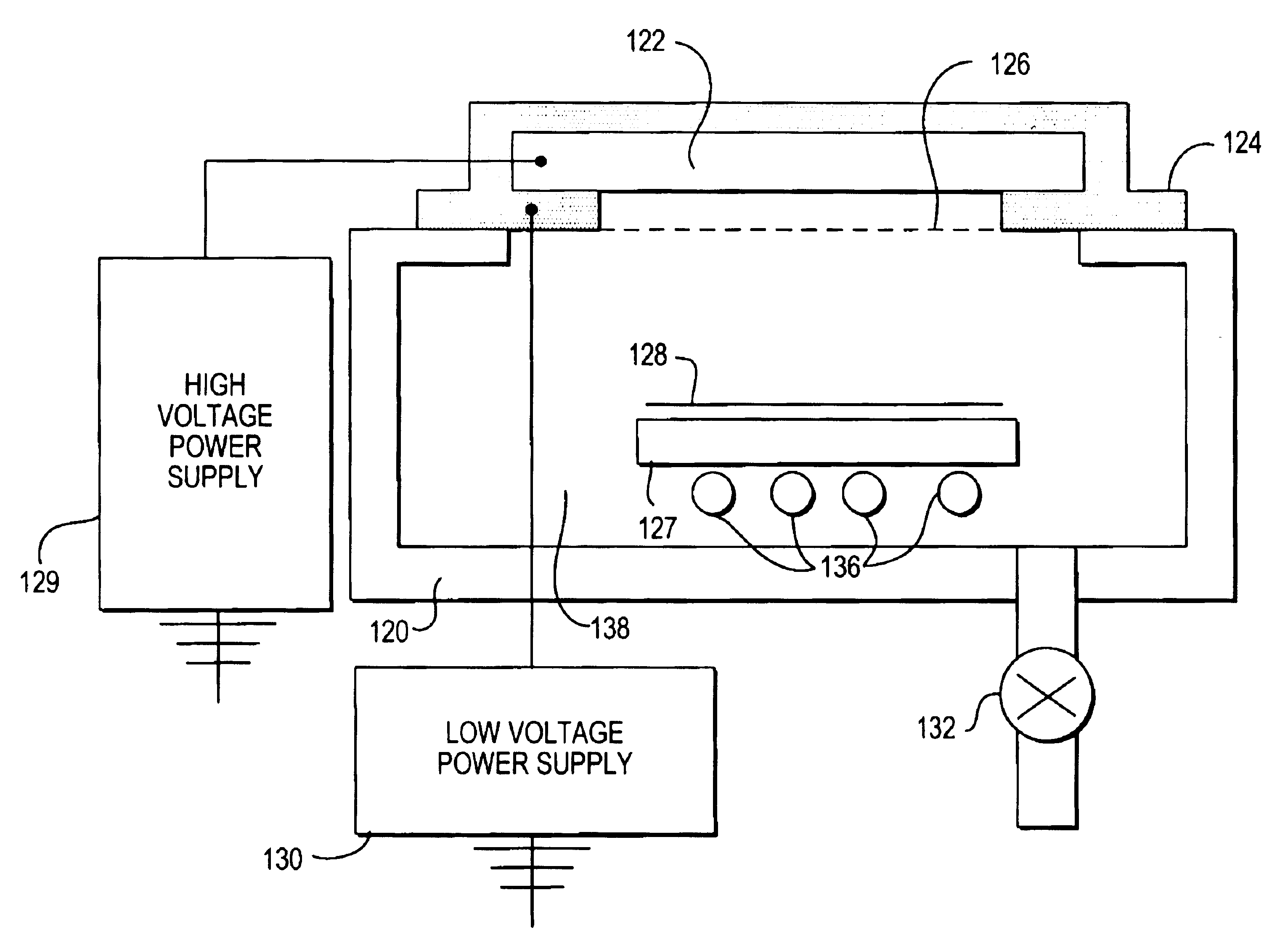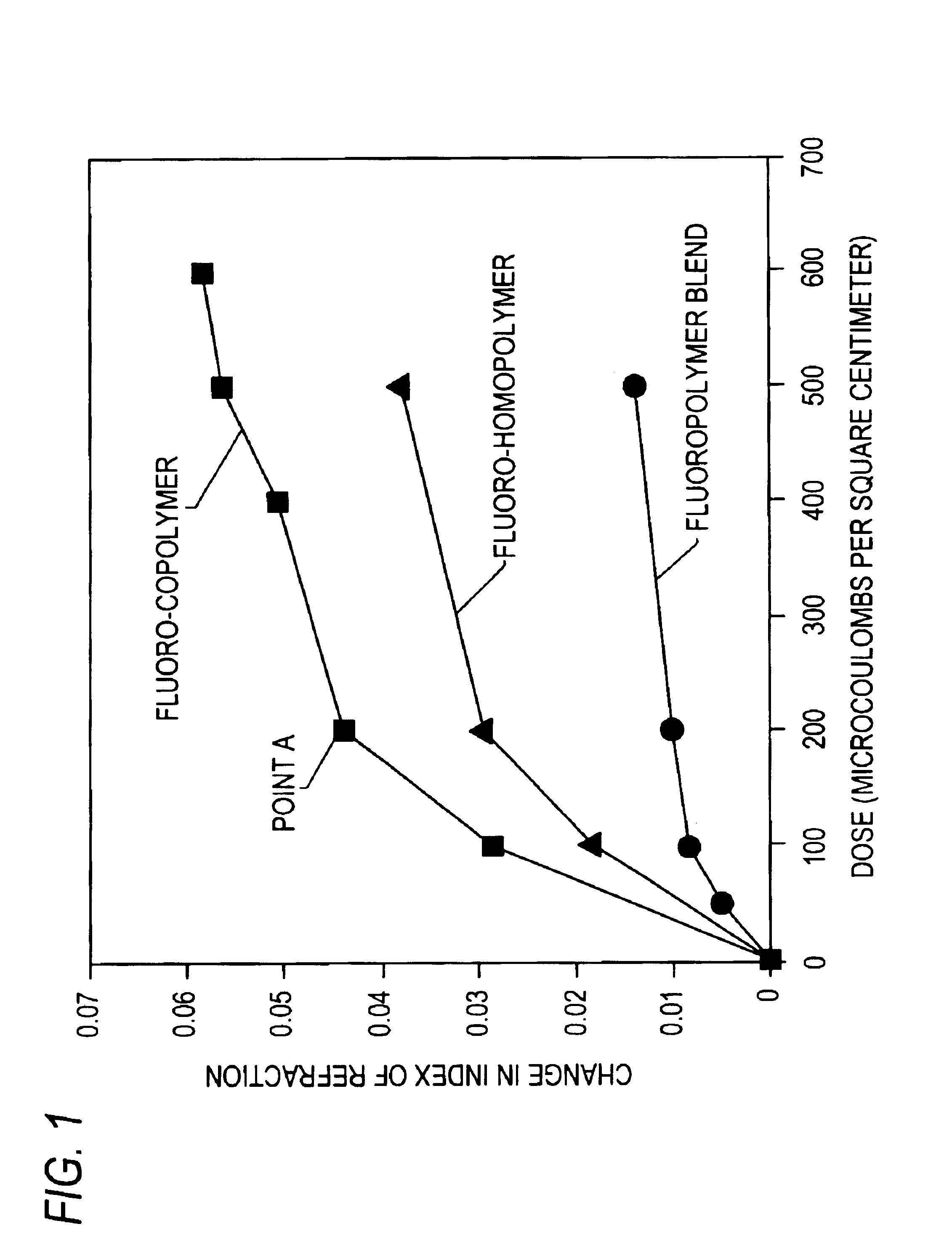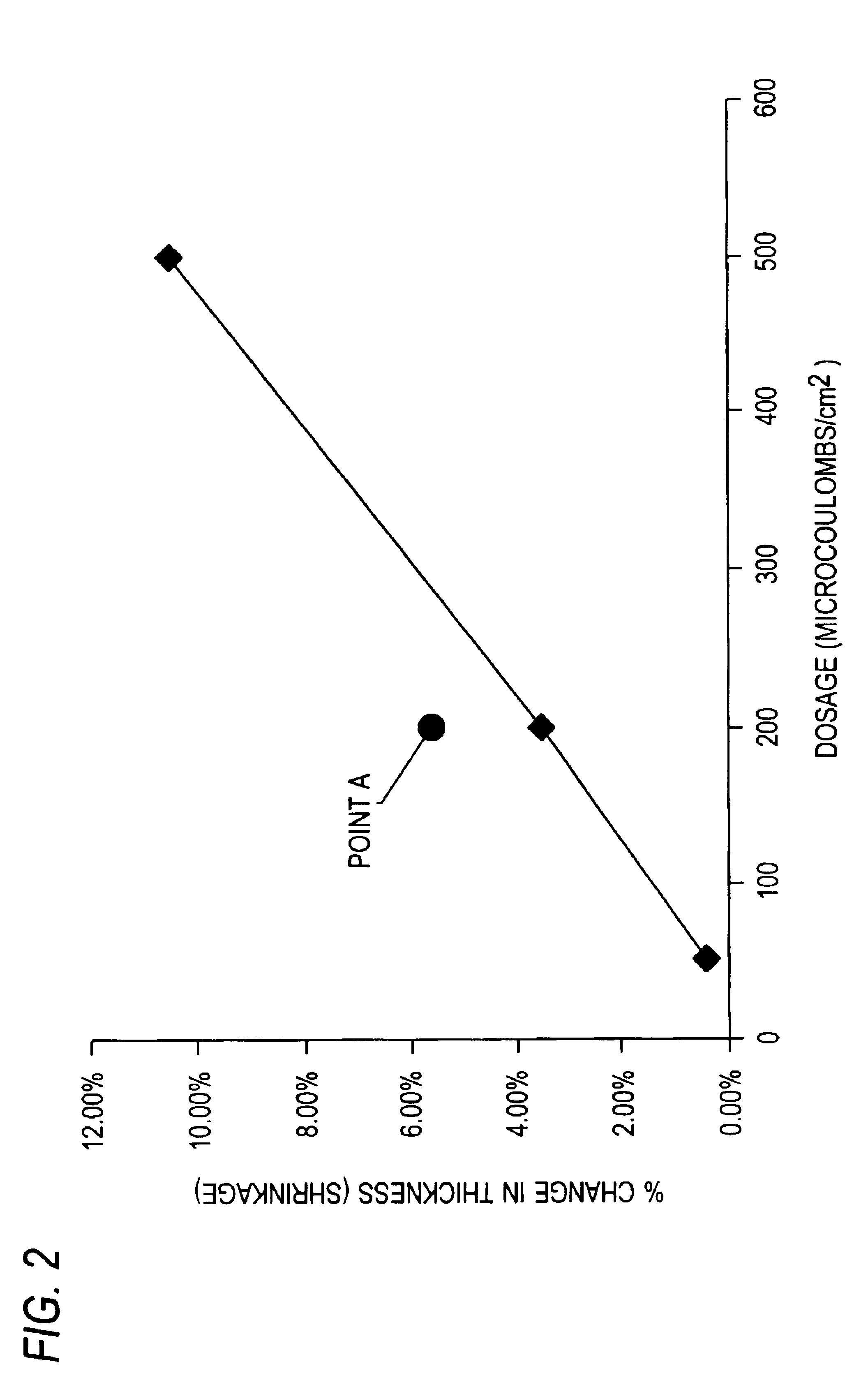Method and apparatus for forming optical materials and devices
a technology of optical materials and forming methods, applied in the field of fabrication of optical materials, can solve the problems of complicated fabrication techniques, complicated and complicated, and is especially bothersome, and achieve the effects of simplifying the fabrication of optical components, reducing solubility, and improving optical properties
- Summary
- Abstract
- Description
- Claims
- Application Information
AI Technical Summary
Benefits of technology
Problems solved by technology
Method used
Image
Examples
Embodiment Construction
[0032]The exposure of selected optical materials to electron beam irradiation can convert the existing material into a new state which exhibits more desirable optical and mechanical properties not present in the un-irradiated material. An example of this can be seen in FIGS. 1 and 2 which shows a plot of surface refractive index as a function of electron dosage and overall thickness respectively in a uniformly irradiated sample as a function of electron dosage for several amorphous fluoropolymers. The new optical material was created only by exposure to the electron beam. The introduction of extra bonds within, in this case, a high polymer results not only in large index change but also results in insolubility in a solvent of the original (irradiated) materials. This conversion can be done selectively in 3 dimensions in either a continuous or periodic manner in normally non-reactive material systems including oil, waxes, monomers, oligomers, and high polymers such that a number of o...
PUM
 Login to View More
Login to View More Abstract
Description
Claims
Application Information
 Login to View More
Login to View More - R&D
- Intellectual Property
- Life Sciences
- Materials
- Tech Scout
- Unparalleled Data Quality
- Higher Quality Content
- 60% Fewer Hallucinations
Browse by: Latest US Patents, China's latest patents, Technical Efficacy Thesaurus, Application Domain, Technology Topic, Popular Technical Reports.
© 2025 PatSnap. All rights reserved.Legal|Privacy policy|Modern Slavery Act Transparency Statement|Sitemap|About US| Contact US: help@patsnap.com



